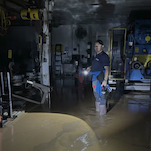Scientists think this super-charger protein could keep you from getting sick
The next time you get sick, say a little prayer of thanks for the CD8+ T cell. That’s the type of cell whose job it is to kill infected or malignant cells in your body. Your body has many ways of fighting off illnesses, but the CD8+ T cell is one that really kicks your immune system into overdrive.
But in the face of an infection, there often aren’t enough of them to do the job, in part because the systems that kick them into gear stop working well. And so your immune system simply gets overloaded by sick cells, a condition known as “immune exhaustion.” Now, a group of researchers at Imperial College London has found a new type of protein they say they may be able to kick-start your body’s production of CD8+ T cells, which could strengthen your immune system and make your body an infection-fighting machine.
This little cellular super-charger is called the Lymphocyte Expansion Molecule, or LEM for short, a previously unknown protein that helps your immune system grow more CD8+ T cells, according to a new study published this week in the journal Science.
-

-

-

-

-

-

-

-

-

-

-

-

-

-

-

-

-

-

-

-

-

-

-

-

-

-

-

-

-

-

-

-

-

-

-

-

-

-

-

-

-

-

-

-

-

-

-

-

-

-

-

-

-

-

-

-

-

-

-

-

-

-

-

-

-

-

-

-

-

-

-

-

-

-

-

-

-

-

-

-

-

-

-

-

-

-

-

-

-

-

-

-

-

-

-

-

-

-

-

-

-

-

-

-

-

-

-

-












































































































